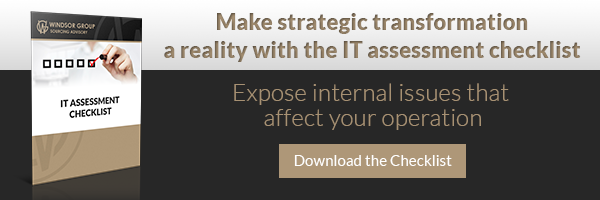 Your long-established legacy mainframes are aging beyond their effective value. This situation isn’t going to fix itself. And the longer you wait to address it, the more likely your problems will morph from annoying and worrisome to dire. Now is the time to think ahead, so your enterprise can transition smoothly and seamlessly to new solutions without disruption or delay.
Your long-established legacy mainframes are aging beyond their effective value. This situation isn’t going to fix itself. And the longer you wait to address it, the more likely your problems will morph from annoying and worrisome to dire. Now is the time to think ahead, so your enterprise can transition smoothly and seamlessly to new solutions without disruption or delay.
You don’t have to jettison mainframe operations to take a new direction. Outsourcing can enable your company to adopt new ways of getting the work done – reliably, securely and efficiently as always. What might those new solutions be? You won’t know without performing an in-depth IT infrastructure assessment that identifies both current operations and total cost of ownership.
Does the word “assessment” make you cringe?
Don’t think of it as a burden, think of it as the key to your enterprise’s most profitable future. Mainframe operations are the foundation of everything else you do, so you have to get it right.
An IT infrastructure assessment gives you whole-view insight. It helps you fully understand your strengths and where you need help. It helps you uncover hidden opportunities, both internal and external. It allows you to establish a valid baseline so you can intelligently and confidently set out a new path toward transformation.
You can perform a comprehensive assessment in three steps. When you’re done, you’ll be armed with a high-level business case to determine whether mainframe outsourcing offers beneficial alternatives for your company, and if so, what types of solutions might be most promising. The data you derive from your assessment can guide you toward other strategically sound business decisions, too.
Here’s how to approach your IT infrastructure assessment:
- Establish your baseline, by creating a chart that shows every IT service output and the costs associated with it, by business unit. Forecast those costs for the same time period you might expect for an outsourcing contract.
- Pinpoint best-fit opportunities, by researching potential solution choices – cloud computing, selected services, etc. – as well as prospective service providers and pricing options. From these, you can tailor a high-level solution that matches your needs, budget and overall goals.
- Construct that all-important business case, by comparing what you found in Step 1 with what you found in Step 2.
This is an incremental, systematic approach to performing an IT infrastructure. You probably have all or most of the data you need, so it’s really more a process of assembling it in a different way. And making sure you’re gathering every last detail.
It’s easy to overlook indirect costs that can significantly affect costs or functionality. And if you’re considering outsourcing, prospective providers will need to know those details so they can craft a proposal you can accurately compare against your own total cost of ownership. Indirect costs include IT-related expenses that appear within your budget on non-IT lines – HR, office space, accounting, etc. But they also include less-obvious costs such as:
- Depreciation and amortization.
- Disposition of contractual commitments for hardware or software that may be in play at the time you decide to outsource.
- Out-of-pocket and residual costs relating to out-of-scope functions.
- Costs associated with working with your outsourcing consultant and service providers.
- Transition-related costs.
- Intangibles such as improved customer satisfaction – hard to quantify, but you should try.
You can’t stop the advance of time. Your mainframe legacy systems continue to age every day, pulling you farther away from efficiency and the kind of leading-edge business practices necessary to keep you competitive and profitable.
You have to do something, and soon. Your choices have to make financial sense, and they have to support your enterprise-wide ability to roll with whatever customers or the competition throws your way.
So get started on that IT infrastructure assessment, and you’ll have taken the first step toward securing the efficacy of your mainframe operations for years to come.
Photo Credit: Pargon via Flickr


